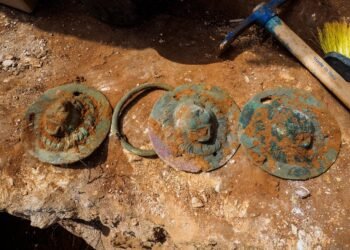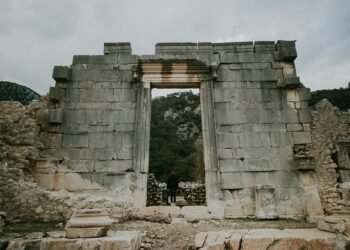A recent archaeological study led by researchers from Cambridge University sheds new light on the medieval benefits system implemented by the Hospital of St. John the Evangelist. Founded in 1195 and replaced by St. John’s College in 1511, the hospital aimed to assist the “poor and infirm” through a unique approach to charity.
In 2010, the hospital’s main cemetery was excavated, revealing over 400 burials. Professor John Robb from the University of Leicester emphasized the importance of understanding medieval towns like Cambridge as “a sea of need.”
By examining over 400 adults and children buried between CE 1200 and 1500, researchers have provided a detailed picture of their lives, health, and societal standing. The analysis involved DNA and isotope analysis, human skeletal variation, and other disciplines, compiling one of the richest datasets for medieval England.
The hospital’s criteria for providing long-term care were a blend of material needs, local politics, and spiritual merit. Certain groups, such as lepers, pregnant women, and the insane, were prohibited, while piety became a crucial factor. Inmates, consisting of scholars, orphans, and the destitute, were required to pray for the souls of benefactors. Professor Robb highlighted, “A hospital was a prayer factory.”
Despite facing a sea of need, the hospital managed to endure for 300 years by assisting a diverse range of individuals. The inhabitants were not solely from the underclass; rather, the hospital welcomed scholars, orphans, and what the researchers term as the “shame-faced poor”—individuals who fell from prosperity into destitution. The study identified up to eight residents with isotope levels suggesting a lower-quality diet in later years, potentially representing this group.
The skeletons revealed that inmates were, on average, an inch shorter than townspeople, with indications of childhoods marked by hunger and disease. However, they exhibited lower instances of physical trauma, suggesting that life within the hospital environment mitigated some physical hardships. Children buried in the hospital were notably small for their age, indicating probable orphans.
Professor Robb speculated that some individuals within the hospital might have been early scholars of the University of Cambridge. The variety of people accommodated, ranging from orphans to scholars and the formerly prosperous, served to appeal to a broad range of donors.
The research introduces characters like “Wat,” a stocky man who survived multiple Black Death waves but fell on hard times and succumbed to cancer at 60. Another individual, “Maria,” experienced an impoverished childhood, did heavy manual work, and later contracted tuberculosis, possibly finding solace in the hospital.
The researchers concluded that by caring for a diverse group of people, the hospital could appeal to various donors emotionally, contributing to its survival for three centuries. The study’s findings not only unravel the intricacies of medieval charity but also provide a window into the resilience and adaptability of charitable institutions throughout history.
The study was published in the journal Antiquity.























